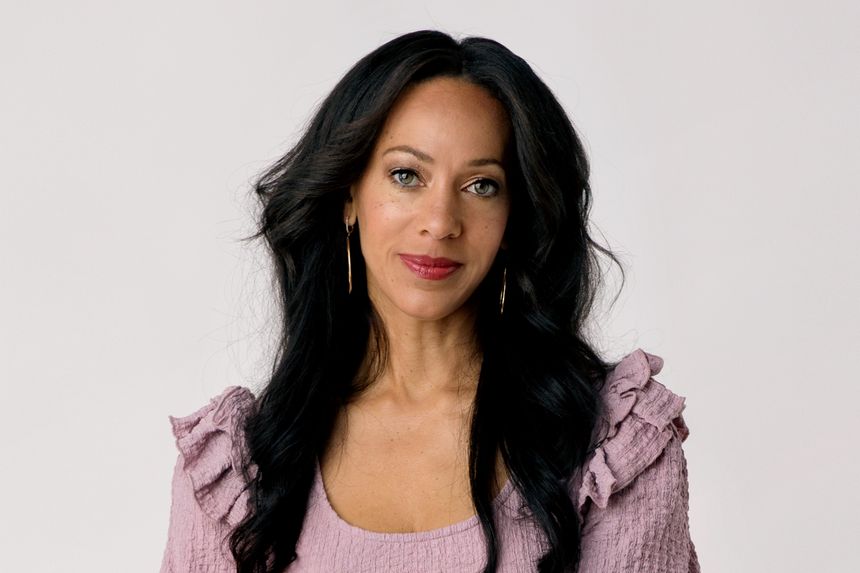Having the right elements and the right design is critically important to reaching the right people the right way. Detria Williamson, the CMO of IDEO, has years of experience working with clients to create meaningful impact through design, and throughout that time she has seen the world of design shift and the buyers’ needs change. To meet those needs, Detria says it’s all about listening carefully to what customers are saying.
“The new design buyer, they’re CMOs, they’re CEOs, they’re CTOs, they’re Chief Diversity Officers. So we really needed to make sure that we were expanding our listening ability and in terms of making sure that our services were known to other leaders across the C-suite. Articulating all of our communities and deeply listening internally and across all those communities.
On this episode of Marketing Trends, I was excited to hear more about what it takes to actively listen and respond in today’s world. Plus, Detria and I got into how she is helping to not just create more inclusivity, but allow it to become common practice across the industry. Detria has a revolutionary way of thinking about building her team of designers, seeking maximal creativity and diversity of ideas as the primary focus, and she explains it all in this episode. All this up next on Marketing Trends!
Main Takeaways
- Inclusive Customer Experience: Break away from the idea that it’s only important to focus on diversity and instead think more about inclusion. You can fake diversity but true inclusion is harder to imitate.
- The New Design Buyer: As design has become more democratized and the design-buyer has changed, it’s more important than ever to tune into what they are asking for. Some of the leaders in these positions may not even know about the resources available to them, so there is an educational part of the process as well.
- Don’t Over-stack: The explosion of MarTech tools means that marketing solutions are abundant but it’s important to maintain a healthy balance in your budget to ensure that you have the people and the resources to put it to use. Make sure you are constantly evaluating your tech stack based on what is performing and what is not. If something isn’t performing, get rid of it in favor of a tool that is a driving force for your business.
Key Quotes
“The most well-known digital tool that I created while I was there is called inclusive customer experience. It really fell out of a design-thinking workshop that we were doing. So again, design-thinking has always been this kind of three-way savior. I would say through my career, it’s a safety net.”
“Diversity can be engineered, but inclusion can’t.”
“There are so many CMOs that don’t have the luxury, the privilege, or sometimes even the awareness to have design built into their budgets. So when you say design for inclusion, that requires intention and requires you to allocate financial resources and team resources behind it. What you gain from it is beyond imagination. Having a more inclusive brand and a more inclusive experience has to be designed for.”
“The new design buyer they’re CMOs, they’re CEOs, they’re CTOs, they’re chief diversity officers. So we really needed to make sure that we were expanding our listening ability and in terms of, you know, sort of making sure that our services were known to other leaders across the C-suite. So articulating all of our communities and deeply listening internally and across all those communities.”
“Three things from a design perspective: One is designing for inclusion. Two is designing for privacy, and three is designing for experience. CMOs have to do that.”
“You can’t hire your way through [inclusion]. I don’t think that that’s the only, or the quickest or most agile way to solve for CMOs answering to big challenges. Designing your way through them is the way forward.”
“[I’m] not just looking at diversity in terms of gender diversity, in terms of ethnicity — those to me are table stakes. When you hire radically inclusive leaders, those things just happen. They should happen automatically. But diversity in terms of how they gain their skills. If you go, and you actually recruit everybody out of San Francisco, that’s grown up the same way that’s come out of the same type of households. It’s had the same track through the UC schools, — no knock against UC schools or the schools there — You’re probably going to get people that approach a problem that come day to daya with the same sort of approach, they come with the same stories, the same way they attack problems.
“You have to stay inspired and stay nourished. Because our agendas are wicked. They’re just crazy. So that’s one thing. It sounds again really simple, but if you want to stay confident, then you have to stay nourished. You have to stay inspired in order to maintain and sustain inspiration to your teams.“
“Make sure that your infrastructure is in place so that you can use MarTech to really align sales and marketing. It doesn’t matter if you are a company of 20 or a company of 200,000, there’s a stack out there for every size company. And MarTech is really the answer to aligning.”
“There’s new software platforms, there’s so many, I call it the spaghetti stack. I think when you are trying to make that [MarTech] choice, it’s really important to make sure that you have the support that you need from the new software tools. Make sure that you have that through-line, especially I would say for smaller mid-sized companies.”
Bio
Combine the outlook of a visionary with the rigor of a high-performing athlete and you’ll begin to get a sense of IDEO CMO Detria Williamson. She has spent more than 20 years as an innovative brand experience marketer who gives companies a brave push forward, bringing the discipline and mindset needed to create new brand ecosystems while building on the resonance and value the brand already has to its audiences.
It’s an effort underpinned by two core beliefs: that focusing on diversity and having a growth mindset are important but far too narrow alone, and that inclusive experience is the center of gravity for a brand. This has led Detria to create the ICX (inclusive customer experience) approach. It’s a way to integrate all elements of the customer experience—how people are targeted, how products are designed, and how audiences and communities are shaped and formed—and to make sure the thinking is inclusive.
While you are likely to hear her quip “we’re good to grow,” Detria believes a change mindset is the true requisite for new-age marketers. It’s one that is fixated on openness, not daunted by curveballs, and totally liberated through things that are new. How that has come to life: As Global Business Director for Emirates Airlines, Detria spearheaded transitioning their multi-million-dollar sports sponsorship budget from the time-tested practice of logos on jerseys to cultivating global sports communities using the power of media, video, digital, and sports celebrities.
She joined IDEO as CMO with an outlook shaped by her experiences living and working in the US, London, Singapore, and the Middle East. It has given her a strong basis from which to build international teams with a global mindset, enabling brands to reach audiences and form communities across geographies and markets. With a proven record of developing high-value, high-impact brand experiences, as of 2020, Detria has grown over $5B in brand equity for clients across a variety of industries and categories, including Google, Capital Group, Discovery, and AT&T.
—
Marketing Trends podcast is brought to you by Salesforce. Discover marketing built on the world’s number one CRM: Salesforce. Put your customer at the center of every interaction. Automate engagement with each customer. And build your marketing strategy around the entire customer journey. Salesforce. We bring marketing and engagement together. Learn more at salesforce.com/marketing.
To learn more or subscribe to our weekly newsletter, visit MarketingTrends.com.





